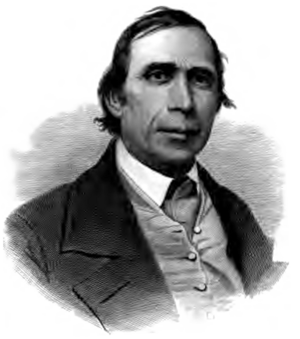Jonathan Walker (abolitionist) facts for kids
Jonathan Walker (born 1799 – died May 1, 1878) was an American reformer. He became famous in 1844 as "The Man with the Branded Hand". This happened after he tried to help seven enslaved people escape to freedom. He was caught and punished by the U.S. Government. They branded his hand with the letters "S S", which stood for "Slave Stealer".
Contents
Jonathan Walker's Life Story
Jonathan Walker was born in Harwich, Massachusetts. When he was young, he learned how to sail and became a fishing boat captain. In 1837, he moved to Florida and started working on railroads. He became very concerned about the lives of enslaved people there.
Helping Enslaved People Escape
In 1844, Walker decided to help several enslaved people. They tried to escape in an open boat from Florida to the British West Indies. Slavery had been ended there ten years earlier.
During their journey, Captain Walker became very sick. The people with him did not know how to navigate the boat. They might have drowned if another boat had not rescued them. This boat took Walker to Key West.
Capture and Punishment
From Key West, Walker was sent in chains to Pensacola. He was put in prison, chained to the floor, and kept in poor conditions. Walker later wrote about how terrible the jail was and how cruelly enslaved people were treated there.
Walker was put on trial in a federal court in Pensacola. He was found guilty of helping enslaved people escape. His punishment was to be tied to a "pillory" (a wooden frame) in public. His right hand was branded with a hot iron, leaving the letters "S S" for "slave stealer". He was also put in prison and had to pay a large fine.
"Slave Savior"
For many people who supported him, the letters "S S" meant "Slave Savior" instead. A U.S. Marshal named Eben Dorr, who also traded enslaved people, carried out the branding. Walker was then sent back to jail. He stayed there for eleven months.
Northern abolitionists (people who wanted to end slavery) paid his fine. This allowed him to be released.
Life After Prison
After being released, Jonathan Walker spent five years giving talks about slavery. He traveled through the northern and western states. For example, in 1847 and 1848, he went on a four-and-a-half-month speaking tour with another activist, John S. Jacobs.
In 1853, Walker helped to restart the Michigan Anti-Slavery Society in Adrian, Michigan. He worked with other important abolitionists like Stephen Symonds Foster, Abby Kelley Foster, Sojourner Truth, Marius Robinson, and Sallie Holley. The state society had first been started in 1836 in Ann Arbor, Michigan.
He lived in Wisconsin in 1855 and 1860, near Winooski, Wisconsin. Around 1866, he moved to Michigan and lived near Muskegon.
Later Life and Legacy
Jonathan Walker passed away on May 1, 1878, in Lake Harbor near Norton Shores, Michigan. He is buried at Evergreen Cemetery in Muskegon. His wife, Jane Gage Walker, died in 1871 and is buried in Norton Cemetery. Two of their youngest sons died before them, but two sons and five daughters survived both parents.
A monument was built to honor Captain Walker on August 1, 1878. An abolitionist named Photius Fisk paid for the monument. He also funded several other monuments for people who fought against slavery. This monument became a special place for people working for racial justice.
The famous poet John Greenleaf Whittier wrote a poem about Walker called "The Branded Hand". Whittier learned about Walker after reading a book about his trial and imprisonment. The poem praised Walker's brave actions.
A plaque honoring Walker was placed on the lawn of the Harwich, Massachusetts Historical Society.
See also
- John Murrell (bandit)
- Reverse Underground Railroad
- Underground Railroad
Images for kids






